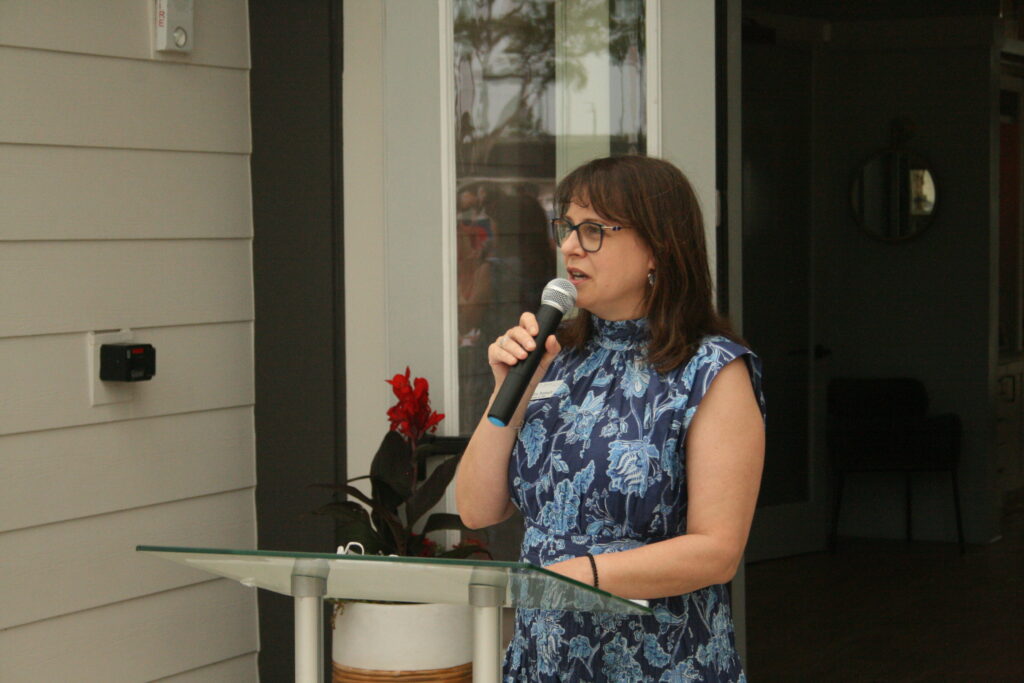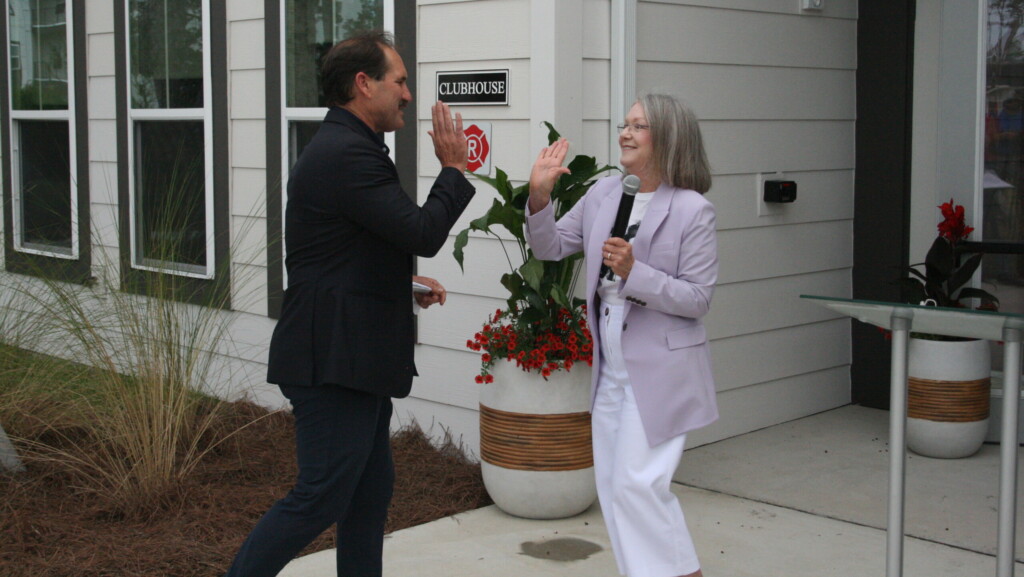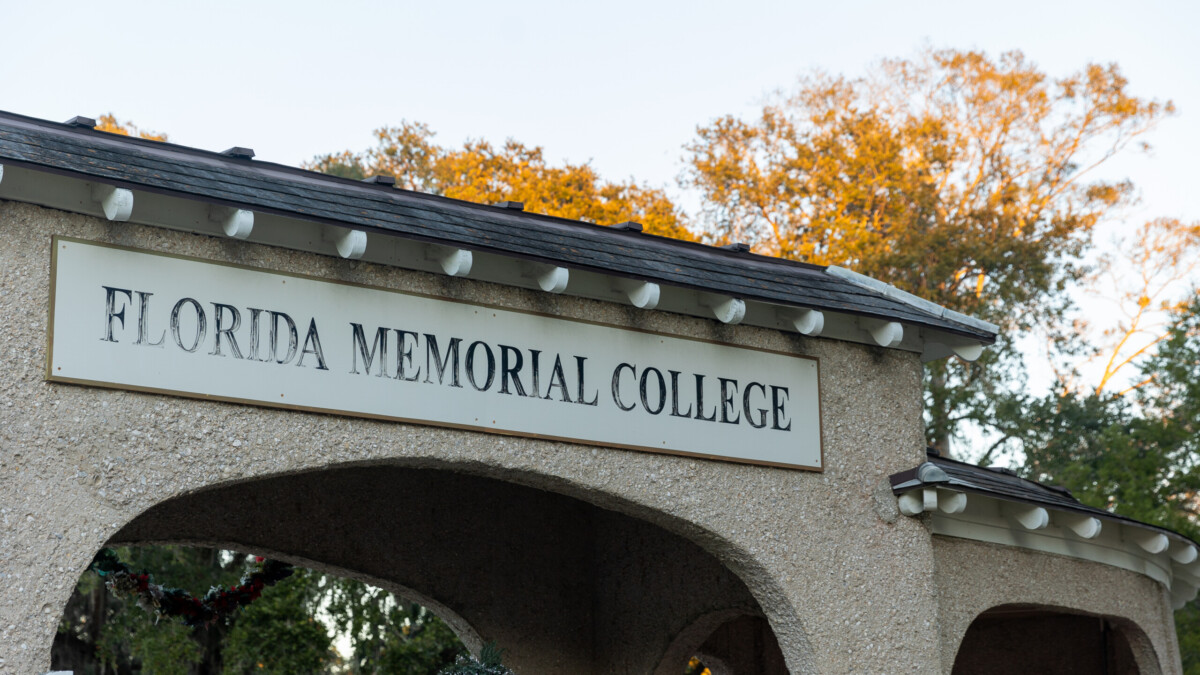Nina Argento is an industrial engineer at Northrop Grumman in St. Johns County, but she lives in Duval County with a roommate after a “discouraging” attempt to find affordable housing closer to work.
After she graduated from the University of Florida in 2018, Argento moved to California, but after a few years there, she dreamt of living somewhere where she could afford to live with fewer than three other people. Most college graduates in STEM fields she knows tend to think, “OK, cool, I can maybe afford to rent on my own” after school, she says.
Commuting an hour round trip every day, she would love “more time for me to be able to support my life outside of work.”
St. Johns County’s business and housing advocacy groups are applauding the opening last week of St. Augustine’s 500-unit Flagler Crossing apartments, with more than 1-in-5 reserved as workforce housing. But with so many workers like Argento having to commute, a lack of affordable housing overall is increasingly contributing to congestion on the rapidly growing county’s roads.
Four of St. Johns County’s biggest employers report that more than 1,500 of their staffers in the $45,000-$60,000 salary range commute in from outside the county, some coming from as far away as Gainesville and Volusia County for work. And a 2023 study by former Florida Chamber Foundation Chief Economist Jerry Parrish found nearly 38,000 workers commute to St. Johns County in all, nearly 15,000 of them from Duval.
The biggest four, the St. Johns County School District, Northrop Grumman, Flagler Health and the St. Johns County Sheriff’s Office, say significant chunks of their workforce — teachers, cops, nurses and more — just can’t afford to live where they work.
Most people in that salary range don’t qualify for government-subsidized affordable housing, so the St. Johns County Chamber of Commerce is pushing for a bigger inventory of what it calls “attainable housing.”
Chamber CEO and President Isabelle Renault says the situation is too dire to hope for the market to correct it.
“I don’t see that happening in a county that is still growing, that is still attracting a lot of people, that still has a lot of potential and still quite a bit of land,” she tells Jacksonville Today.

The chamber formed an Attainable Housing Taskforce in 2022 as the county’s biggest employers kept having the same gripe.
“They go through all these processes to hire somebody,” Renault says, “and the last thing stopping them from moving forward with a candidate was housing.”
‘We’ve got to look out for our own employees’
Employees in the $45,000-$60,000 salary range make up a third of Northrop Grumman’s St. Johns County staff and half of the St. Johns County County School District’s payroll.
For them, commuting from afar for work means more money spent at the gas station and more time away from family.
A longer-than-preferred commute is something one St. Johns County Schools teacher who spoke to Jacksonville Today is all too familiar with. The teacher, who works at a K-8 academy, and lives in Clay County, asked not to be identified for fear of their job.
With nearly 20 years of experience teaching in Northeast Florida and a master’s degree, the teacher’s take home pay is still under $60,000.
“On a teacher’s salary, even if I were to sell my current town house … I could probably make about $200,000 on it,” they tell Jacksonville Today. “Even if I put $200,000 on (a home in St. Johns County), my mortgage would still be north of 60% of my take-home pay, which is just not realistic.”
And after every school day, the long commute home cuts into time that could be spent helping their child with homework, taking care of personal business or just relaxing. But that time spent on the highway is still not enough to drive a teacher away from where they love working.
“Truth be told, I love my job here,” the teacher shares. “I’m working at a fantastic school with wonderful teachers, fantastic administrators and great kids. It’s a wonderful place to work, it’s just really expensive.”
But not every worker in St. Johns County will stick it out forever, St. Johns Housing Partnership Executive Director Bill Lazar says.
“We’ve got to look out for our own employees,” he says.
Lazar’s nonprofit builds and promotes low- and moderate-income housing, the type intended for people who bring home less than 80% of an area’s median income.
A family of four in Duval County brings home an average of $93,300 every year, the same as the average family of four in St. Johns County. But according to Realtor.com, the average residence in St. Johns County in February cost roughly $300,000 more than just over the border in Duval, Clay or Putnam.
And even in counties cheaper than St. Johns, prices are quickly on the rise.
Lazar says the affordable housing shortage isn’t going to get any better until the county can overcome the two biggest hurdles he sees: NIMBYs and real-estate investors.

NIMBYs, those “not in my back yard” folks, aren’t necessarily opposed to affordable housing development, but they don’t want it anywhere near them. When enough of them speak up, Lazar says it can make elected officials nervous.
“The NIMBY folks are saying there’s too much growth,” he says, “but they’re throwing the baby out with the bathwater.”
And, what Lazar sees as a common, shortsighted refrain during St. Johns County Commission meetings: building new housing developments will strain already over-trafficked roads. During a recent discussion about a 110-unit complex in St. Augustine with 33 units set aside as workforce housing, a key concern raised by residents was increased traffic on Lewis Speedway.
“I feel like we’re turning St. Augustine into a big city instead of our cute, quaint, small city we used to have,” resident Sherry Brigman shared.
But Lazar says creating more commuters is just worsening traffic.
And even when “attainable” housing is available, it’s not always possible to ensure that it’s purchased by locals instead of companies that buy up single-family homes and turn them into expensive rentals.
“A lot of lots we would have used as starter lots were bought up by these rental investors,” Lazar says. “They’re charging $2,500 for a three-bedroom house. Most of the wage-earners in St. Johns County can’t afford $2,500 a month.”
Currently, St. Johns County requires that designated “workforce housing” must be occupied by its owner and capped at a sales price of $240,000 for two years. Some critics of the policy have argued that two years is not enough time.
A light at the end of the tunnel?
The St. Johns County Chamber’s Attainable Housing Taskforce has identified a handful of solutions members hope the county will consider to beef up its inventory of attainable housing.
One calls for requiring a chunk of cheaper housing in mixed-use developments and developments near transportation centers. Another suggestion is for governments to incentivize affordable and workforce housing developers with less regulation. In many municipalities this looks like allowing developers to build denser communities or to skirt rules on minimum lot sizes, parking or setbacks from the road.

The St. Johns County Chamber of Commerce is working closely with the county to ensure that more-affordable housing for St. Johns County’s workers is a key tenet of its plan for the area. The business community is rallying too. Chamber President Renault says 70 area businesses so far have signed on to the chamber’s open letter arguing that attainable housing is necessary for the community.
Meanwhile, people like Nina Argento are gassing up their cars more than they wish.
“I don’t really see a light at the end of the tunnel as far as average salaries being able to compete with the costs of homes right now,” she says.







